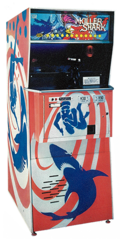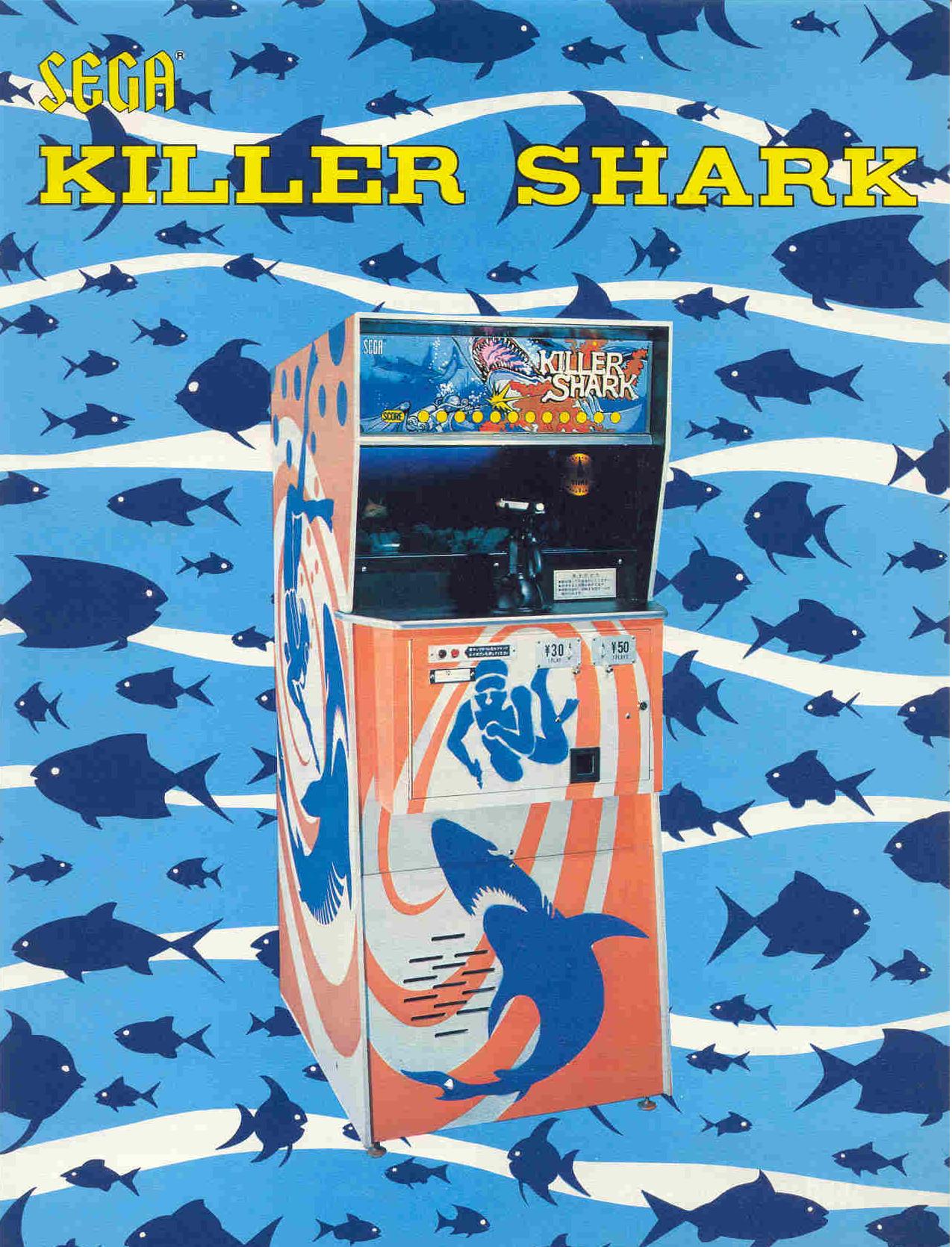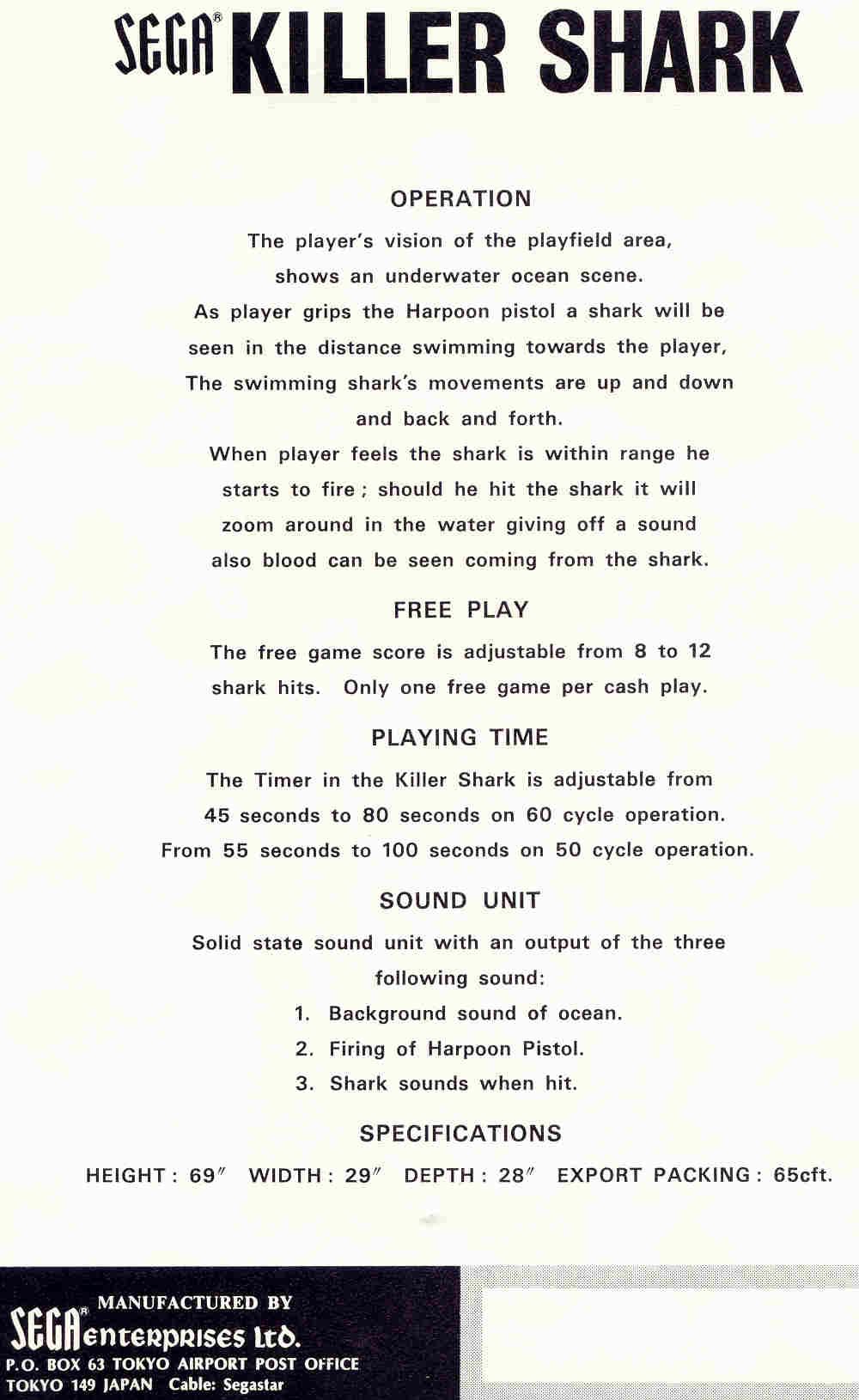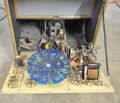Difference between revisions of "Killer Shark"
From Sega Retro
Scarred Sun (talk | contribs) (Created page with 'frameless|right '''''Killer Shark''''' is a 1972 electro-mechanical hunting game produced by Sega. A shark moves around the playing field an…') |
m |
||
| (22 intermediate revisions by 6 users not shown) | |||
| Line 1: | Line 1: | ||
| − | [[ | + | {{Bob |
| − | ''''' | + | | logo=KillerShark logo.png |
| + | | image=KillerShark EM JP.png | ||
| + | | publisher=[[Sega Enterprises, Ltd.]] | ||
| + | | developer=[[Sega Enterprises, Ltd.]] | ||
| + | | distributor={{company|[[Segasa|Sonic]]|region=ES}} | ||
| + | | system=Electro-mechanical arcade | ||
| + | | players=1 | ||
| + | | genre= | ||
| + | | releases={{releasesArcade | ||
| + | | em_date_jp=1972 | ||
| + | | em_date_us=1972-05{{magref|harmony|123|17}} | ||
| + | | em_rrp_us=575{{fileref|CashBox US 1974-12-07.pdf|page=46}} | ||
| + | | em_date_es=19xx | ||
| + | }} | ||
| + | }} | ||
| + | {{stub}}'''''{{PAGENAME}}''''' (キラーシャーク) is a 1972 electro-mechanical hunting game produced by [[Sega Enterprises, Ltd.]] A shark moves around the playing field and the player shoots it with a spear gun. It has a series of slides on a wheel that makes the shark move and thrash around when shot. The game features electronic sound and an 8-track player. It is essentially the same game as Sega's ''[[Sea Devil]]'', but ''Sea Devil'' has a manta ray instead of a shark. | ||
==Specifications== | ==Specifications== | ||
| − | + | ===Dimensions=== | |
| − | + | {{Dimensions|hi=69|wi=29|di=28|diagramsize=150}} | |
| − | |||
| − | == | + | ==History== |
| + | [[File:References Jaws KillerShark.jpg|right|thumb|300px|''Killer Shark'' was used in the 1975 film ''[[wikipedia:Jaws (film)|Jaws]]'' to foreshadow the titular shark's appearance.]] | ||
| + | |||
| + | ===Reception=== | ||
| + | The game was a modest success upon release in 1972. It later became more successful following its appearance in the 1975 film ''Jaws''.{{ref|1=https://books.google.com/books?id=xT1jDwAAQBAJ&pg=PA11}} | ||
| + | |||
| + | ==Promotional material== | ||
| + | {{gallery | ||
| + | |{{gitem|Killershark flyer1.jpg|Flyer (front)}} | ||
| + | |{{gitem|Killershark flyer2.jpg|Flyer (back)}} | ||
| + | }} | ||
| + | |||
| + | ==Photo gallery== | ||
<gallery> | <gallery> | ||
| − | + | KillerShark US front.jpeg | |
| − | + | Killershark machine1.jpg|Front | |
| − | + | Killershark machine2.jpg|Side cabinet art | |
| − | + | Killershark machine3.jpg|Internals showing shark slides on wheel | |
</gallery> | </gallery> | ||
| − | [ | + | ==External links== |
| − | + | *''[https://www.theguardian.com/technology/2015/jun/03/jaws-movie-brought-video-games-films-together Jaws: the movie that brought video games and films together]'' article by Keith Stuart at ''[https://www.theguardian.com The Guardian]'' | |
| + | |||
| + | ==References== | ||
| + | <references/> | ||
Latest revision as of 23:55, 15 November 2024

| |||||||||||||||||

| |||||||||||||||||
| Killer Shark | |||||||||||||||||
|---|---|---|---|---|---|---|---|---|---|---|---|---|---|---|---|---|---|
| System(s): Electro-mechanical arcade | |||||||||||||||||
| Publisher: Sega Enterprises, Ltd. | |||||||||||||||||
| Developer: Sega Enterprises, Ltd. | |||||||||||||||||
| Distributor: Sonic (ES) | |||||||||||||||||
| Number of players: 1 | |||||||||||||||||
|
This short article is in need of work. You can help Sega Retro by adding to it.
Killer Shark (キラーシャーク) is a 1972 electro-mechanical hunting game produced by Sega Enterprises, Ltd. A shark moves around the playing field and the player shoots it with a spear gun. It has a series of slides on a wheel that makes the shark move and thrash around when shot. The game features electronic sound and an 8-track player. It is essentially the same game as Sega's Sea Devil, but Sea Devil has a manta ray instead of a shark.
Contents
Specifications
Dimensions
736.6 mm (29")
1.753 m (69")
711.2 mm (28")
History

Killer Shark was used in the 1975 film Jaws to foreshadow the titular shark's appearance.
Reception
The game was a modest success upon release in 1972. It later became more successful following its appearance in the 1975 film Jaws.[3]
Promotional material
Photo gallery
External links
- Jaws: the movie that brought video games and films together article by Keith Stuart at The Guardian







